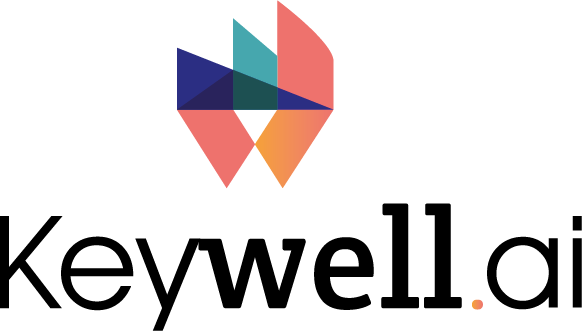Overview of the No Surprises Act and the Federal IDR Process
The No Surprises Act (“NSA”) is a federal protection for patients against surprise bills from out-of-network (“OON”) providers. Before the implementation of the NSA, patients were often responsible for paying these surprise bills, which were usually the result of receiving medical care from OON providers or facilities without the opportunity to select an in-network provider. Now, with the NSA in effect, patients are only required to pay in-network cost-sharing amounts for these services.
The OON provider’s responsibility falls on the health plan, issuer, or Federal Employees Health Benefits Program carrier, who must pay the OON provider an amount per a state All-Payer Model Agreement or specified state law, if applicable. If there is no applicable All-Payer Model Agreement or state law, the health plan must make an initial payment or send a notice of denial of payment.
They may initiate open negotiations if either party disagrees with the payment amount. If the negotiation is unsuccessful, the NSA provides a Federal Independent Dispute Resolution Process (the “Federal IDR Process”), where a certified independent dispute resolution entity will review the case and determine the final payment amount. The Federal IDR Process may be used to determine the OON rate for “qualified IDR items or services,” including emergency services, certain nonemergency items, and services furnished by OON providers concerning patient visits to in-network health care facilities, and air ambulance services. The Federal IDR Process does not apply when a state law or All-Payer Model Agreement establishes a method for determining the final OON payment amount.
The Federal IDR Process can be initiated by either party by submitting a Notice of IDR Initiation to the other party and the Departments of the Treasury, Labor, and Health and Human Services (collectively, the “Departments”) after the close of the open negotiation period. The notice must include the preferred certified IDR entity, which can either be accepted or rejected by the other party. If there is no agreement on the certified IDR entity, the Departments will randomly select one on the parties’ behalf.
The certified IDR entity must finalize its selection by determining that it does not have a conflict of interest and that the Federal IDR Process is applicable. After the certified IDR entity’s selection is finalized, the parties must submit their offers. The certified IDR entity must then select one of the submitted offers, and this payment determination is binding on both parties.
The Payment Determination
In evaluating offers, the certified IDR entity must consider the qualifying payment amount (“QPA”) for the qualified IDR item or service. The QPA is the median of the contracted rates recognized by the plan for the same or similar item or service that is provided by a provider, in the same or similar specialty or facility of the same or similar facility type, and provided in the same geographic region in which the item or service under dispute was furnished. The certified IDR entity is not allowed to determine the accuracy of the QPA.
In addition to considering the QPA, the certified IDR entity must also evaluate additional information submitted by the parties. Specifically, the certified IDR entity must consider:
- The level of training, experience, and quality and outcomes measurements of the provider or facility that furnished the qualified IDR item or service.
- The market share held by the provider or facility or that of the plan in the geographic region where the qualified IDR item or service was provided.
- The acuity of the patient receiving the qualified IDR item or service.
- The complexity of furnishing the qualified IDR item or service to the patient.
- The teaching status, case mix, and scope of services of the facility that furnished the qualified IDR item or service.
The good faith efforts made by the provider, facility, or the plan to enter into network agreements with each other. However, the IDR entity must assess the credibility of this information and cannot give weight to any information that is not credible.
Furthermore, the IDR entity must not consider any information that relates to a prohibited factor. The prohibited factors include:
- Usual, and customary charges.
- The amount that would have been billed by the provider or facility with respect to the qualified IDR item or service had certain provisions of the CFR not applied.
- The payment or reimbursement rate for items or services furnished by the provider or facility payable by a public payor, including under Medicare or Medicaid.
The Problematic QPA
Although well-intentioned, the Federal IDR Process is inherently flawed because of how the QPA is calculated and utilized. As explained, the QPA is the median of the contracted rates for the qualified IDR item or service as calculated by the plan. The QPA is the only rate the certified IDR entity may consider in determining payment.
Moreover, the provider is not allowed to dispute the accuracy of the QPA, and the certified IDR entity is prohibited from determining whether the plan calculated the QPA correctly. In other words, knowing that its QPA is immune from scrutiny, the plan is incentivized to manipulate its calculation of the QPA to make the QPA as low as possible. As a result, the Federal IDR Process necessarily favors lower payment rates.
The calculation and use of the QPA in this manner are problematic for several reasons. Firstly, the QPA is not the true median of the contracted rates for the qualified IDR item or service. Instead, it is the plan’s median of the contracted rates.
Secondly, the plan’s method for calculating the QPA is not transparent. Neither the provider nor the certified IDR entity has the ability to learn how the QPA was calculated. This lack of transparency is especially concerning given that plans use messy data and a high degree of subjectivity when calculating a QPA.
Thirdly, the QPA is the only rate that the certified IDR entity may consider, and the provider is prohibited from submitting any rates for consideration. But if a provider was able to contract a higher rate with a different plan, why should the provider be prohibited from submitting that higher rate to the certified IDR entity for consideration? Although such information would assist the certified IDR entity in reaching an accurate payment determination, providers are barred from providing any rates to counter the accuracy of the QPA.
Incorporating Health Plan Transparency in Coverage (TiC) Data
Theoretically, some of these problems can be remedied due to the recent release of the health plan price transparency data. First released in July 2022, the transparency data includes the prices that health insurers negotiated with participating providers for covered services and items. With this transparency data, the true median of the contracted rates for a qualified IDR item or service can now be determined and submitted to the certified IDR entity.
The certified IDR entity would not be forced to accept the plan’s QPA—without knowing how that QPA was calculated or whether it is accurate. Instead, the certified IDR entity would have peace of mind knowing that its payment determination was based on an unbiased median contracted rate that was calculated using a publicly available dataset. Furthermore, the provider would no longer be shut out from contesting the accuracy of the plan’s QPA. If the provider opposed the plan’s QPA, the provider could now submit its own contracted rate based on the transparency data.
The transparency data was released only a few months before the current guidance on the Federal IDR Process became effective. So it is understandable why this data was not considered when formulating the Federal IDR Process. But now that the transparency data is available, the Federal IDR Process should be revised to incorporate this data, creating a more equitable process and enabling the certified IDR entities to make more informed payment determinations.





